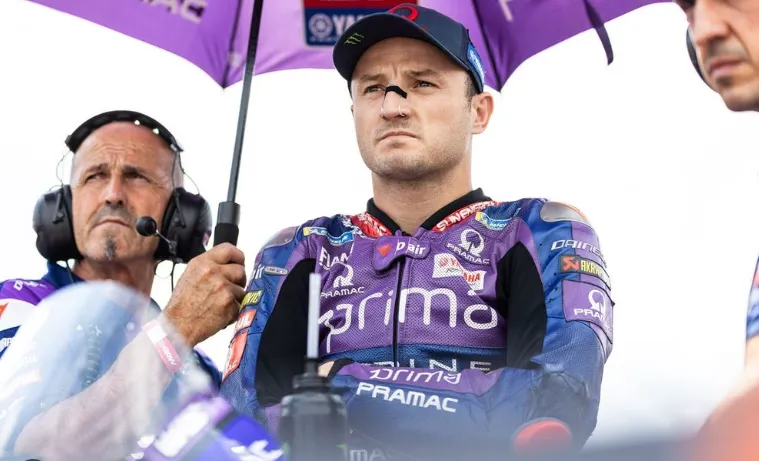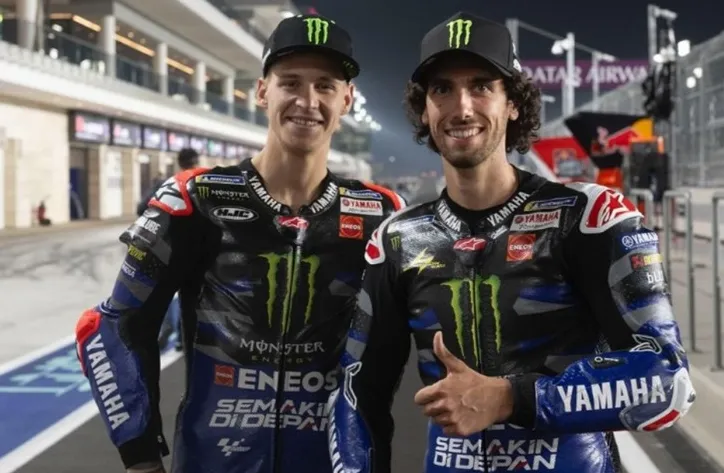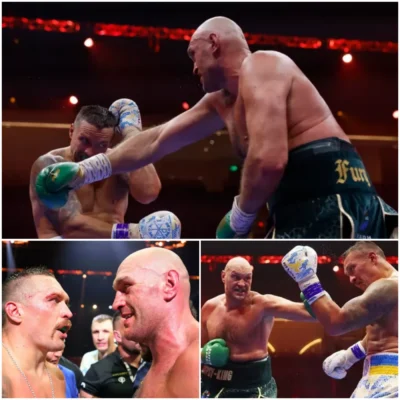
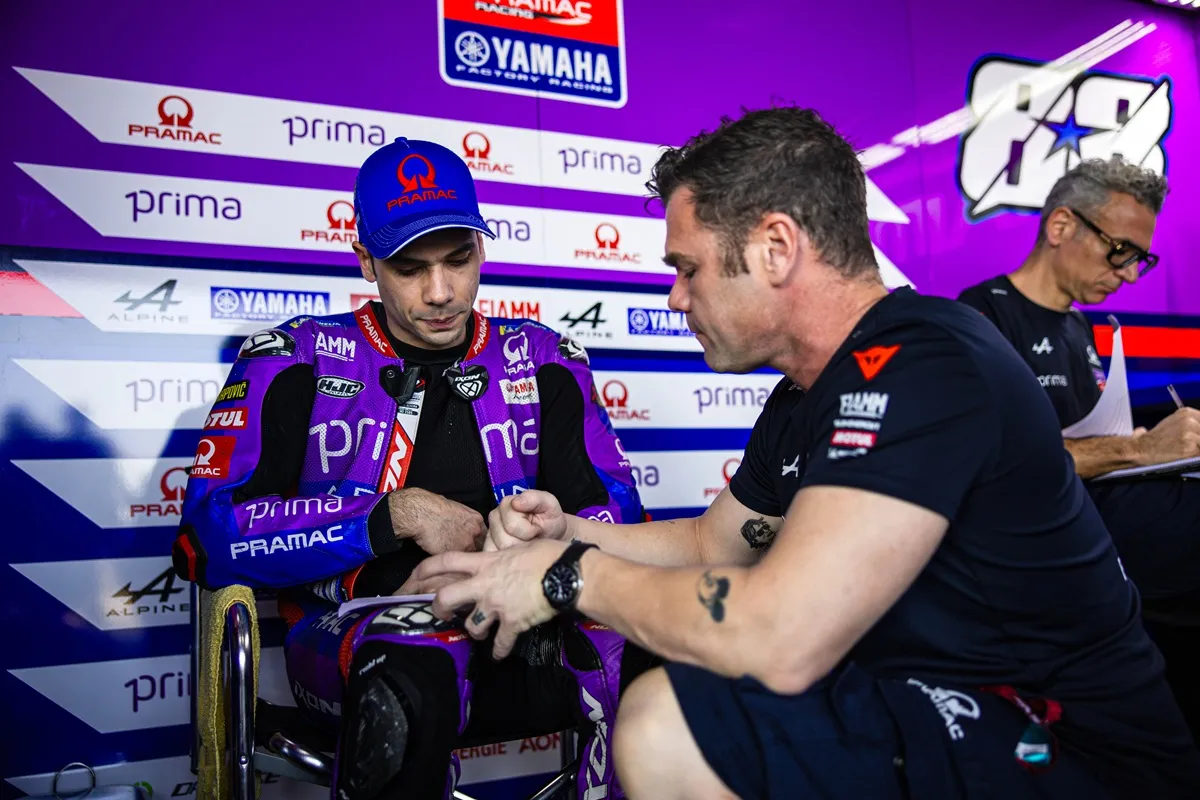
Miguel Oliveira releases blockbuster. Reveals ‘super different’ thing about Yamaha motorbikes
MotoGP is a championship built on speed, precision, and the relentless pursuit of performance. Every detail of a racing motorcycle is engineered to push the limits of what is possible on two wheels. However, when an experienced rider like Miguel Oliveira speaks out about something “super different” in Yamaha’s bikes, the entire paddock listens.
Oliveira, known for his technical understanding and ability to adapt to different machines, has dropped a revelation that could reshape perceptions of Yamaha’s MotoGP project. While the Japanese manufacturer has been struggling in recent years, Oliveira’s insights might explain some of the deeper reasons behind their performance swings.
His comments have sparked widespread discussion among engineers, analysts, and fans alike. What exactly did he mean by “super different”? And could this difference be what separates Yamaha from the dominant forces in MotoGP today?
Yamaha’s Journey in MotoGP: A Struggle for Consistency
A Glorious Past
Yamaha has a long and storied history in MotoGP, with legendary riders like Valentino Rossi and Jorge Lorenzo delivering multiple world championships for the brand. For years, Yamaha was the gold standard in terms of handling, agility, and rider-friendly performance. Their inline-four engine concept gave them a unique character, allowing for smooth cornering and precise throttle response.
During the late 2000s and early 2010s, Yamaha was at the forefront of MotoGP, battling Honda for supremacy. Rossi’s legendary battles with Casey Stoner and Marc Márquez showcased the strengths of Yamaha’s M1 machine, particularly its ability to hold a tight line through corners.
However, the last few years have been far from easy for Yamaha. While Fabio Quartararo managed to win the 2021 world championship, the manufacturer has struggled to keep up with Ducati’s rapid technological advancements. Riders have frequently complained about a lack of power, difficulty in overtaking, and inconsistency in performance across different circuits.
A Decline in Performance
In the modern MotoGP era, where aerodynamics and engine power play a crucial role, Yamaha has fallen behind. Their inline-four engine, once their biggest strength, now seems to be a limitation in an era dominated by powerful V4 machines from Ducati, KTM, and Aprilia.
Riders have repeatedly voiced concerns over Yamaha’s inability to extract the same acceleration and top speed as its competitors. Despite efforts to improve, the gap remains, and frustration has grown within the Yamaha camp.
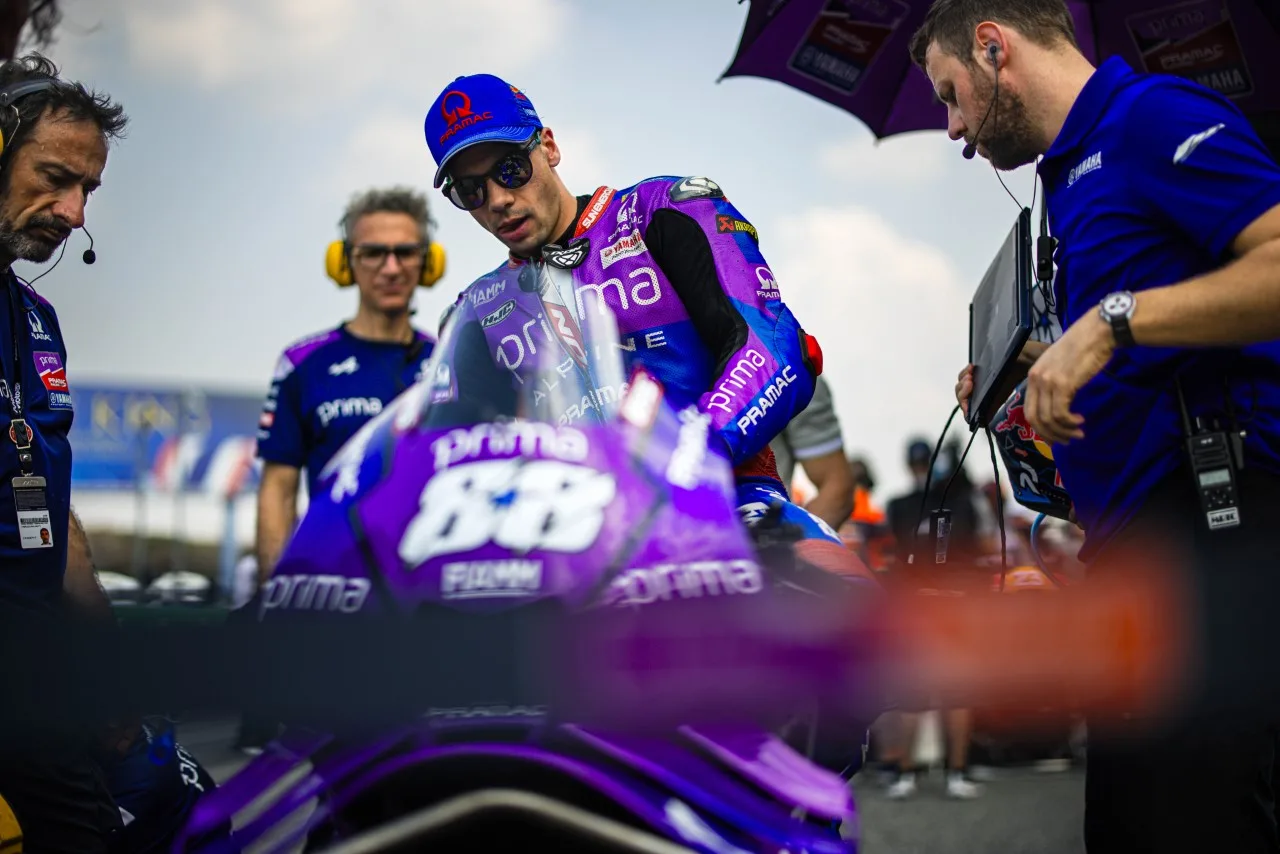
Oliveira’s Revelation: What Makes Yamaha ‘Super Different’?
A Unique Riding Experience
Miguel Oliveira’s comments have shed light on a fundamental difference in how Yamaha’s MotoGP bikes behave compared to other manufacturers. Having ridden multiple MotoGP machines in his career—including KTM and Aprilia—Oliveira has a wealth of experience when it comes to understanding different riding characteristics.
According to Oliveira, Yamaha’s bike offers a “super different” sensation, one that contrasts sharply with the aggressive nature of other manufacturers. While he did not go into full technical details, his statements suggest that Yamaha’s chassis design and engine delivery create a riding experience that is unlike anything else on the grid.
The Cornering Philosophy
One of the most well-known characteristics of Yamaha’s MotoGP machines is their emphasis on cornering ability. Yamaha has historically designed their bikes to prioritize mid-corner stability and smooth acceleration out of turns rather than brute force power on straights.
Oliveira’s words may indicate that this philosophy remains deeply embedded in the M1’s DNA. While other manufacturers have evolved towards aggressive power delivery and high-speed corner exits, Yamaha continues to rely on its ability to hold tight lines through corners.
However, this difference could be both a strength and a weakness. On circuits where flowing corner speed is critical, Yamaha can still be competitive. But on tracks that demand explosive acceleration and high straight-line speed, they continue to suffer.
Electronics and Power Delivery
Another area where Yamaha’s approach seems to differ is in their electronics package and power delivery. Riders have often commented that Yamaha’s power delivery is much smoother than its rivals, making it easier to manage but lacking the aggressive punch needed to fight against the more powerful bikes on the grid.
Oliveira’s comments suggest that this difference is not just about power output but also about how the bike responds to rider inputs. Yamaha’s philosophy of gradual power deployment might feel “super different” compared to the sharp, instant acceleration of a Ducati or Aprilia.
While this smooth delivery can be beneficial for maintaining tire life over a race distance, it can also make overtaking difficult. In modern MotoGP, where every fraction of a second matters, being unable to accelerate as aggressively as competitors is a major disadvantage.
What Does This Mean for Yamaha’s Future?
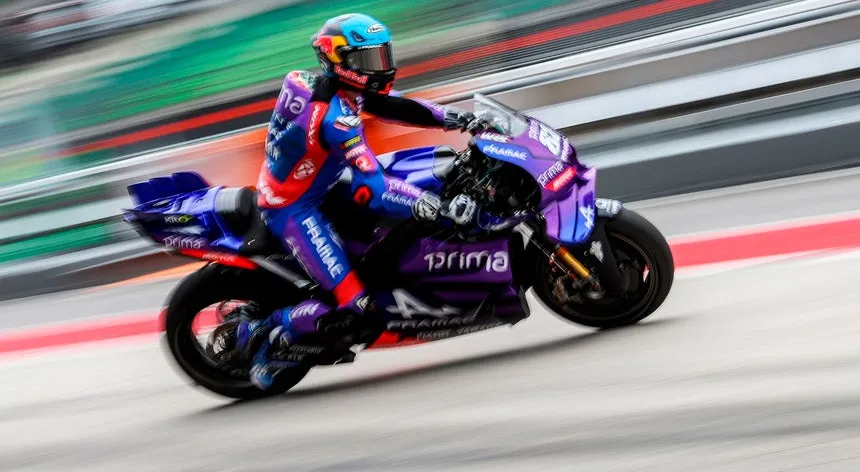
Adapting or Staying True to Their Identity?
With Yamaha’s ongoing struggles, the question remains: should they continue refining their current approach, or should they make a radical shift in their bike design?
Ducati’s dominance in recent years has been built on their ability to innovate and push the boundaries of MotoGP technology. Their V4 engine, cutting-edge aerodynamics, and rear ride-height devices have set new benchmarks for performance. Yamaha, on the other hand, has been slower to embrace these changes.
If Oliveira’s revelations are anything to go by, Yamaha’s “super different” feel may be both their greatest strength and their biggest limitation. Their unique approach to bike development might give them advantages in certain areas, but unless they adapt to the evolving demands of MotoGP, they risk falling further behind.
The Search for More Power
One of the biggest challenges Yamaha faces is improving their engine performance without sacrificing their trademark smooth handling. Engineers are currently working on a more powerful version of the M1 engine, but the transition is proving difficult.
Recent tests have shown some improvements, but whether they will be enough to compete with Ducati, KTM, and Aprilia remains uncertain. Yamaha is also bringing in external expertise, including collaborations with former engineers from rival teams, in an effort to close the performance gap.
Rider Adaptation and the Importance of Feedback
One thing that Yamaha has always valued is rider feedback. The manufacturer has relied heavily on riders like Valentino Rossi, Jorge Lorenzo, and more recently Fabio Quartararo to help fine-tune their bikes.
With Oliveira’s experience on multiple manufacturers’ machines, his insight could prove invaluable if he ever gets a chance to test or ride a Yamaha MotoGP bike. His ability to compare Yamaha’s “super different” feel with other manufacturers’ bikes could help engineers identify key areas for improvement.
Conclusion: A Unique Philosophy in a Changing Sport
Miguel Oliveira’s revelation about Yamaha’s “super different” bike feel has added another layer to the ongoing debate about the brand’s place in modern MotoGP. While Yamaha continues to offer a unique riding experience, their approach is being tested in an era where raw power and aggressive acceleration are becoming more important than ever.
Yamaha must now decide whether to stay true to their traditional strengths or evolve to meet the demands of today’s high-intensity racing environment. With teams like Ducati pushing innovation to the extreme, the challenge for Yamaha is clear—adapt or risk being left behind.
Whether Oliveira’s insights will influence Yamaha’s future direction remains to be seen. But one thing is certain: in a sport where every millisecond matters, being “super different” can either be a game-changer or a downfall. The next few seasons will reveal which path Yamaha chooses to take.








